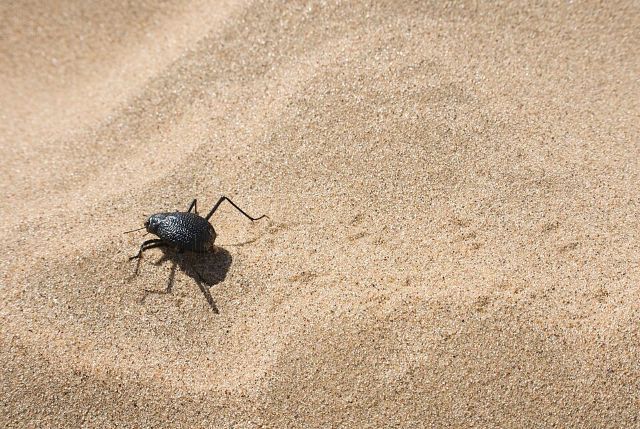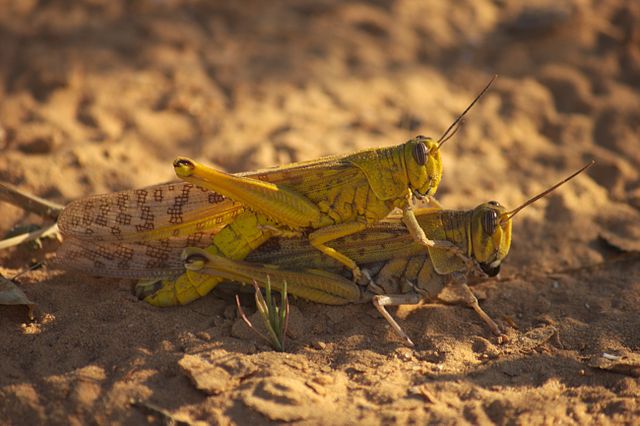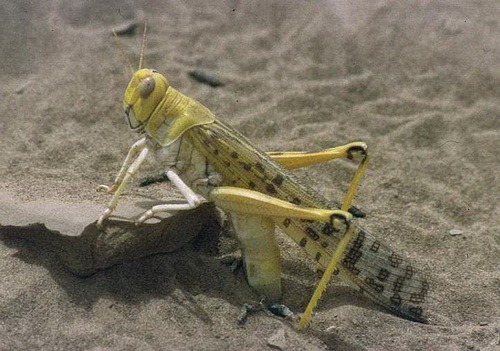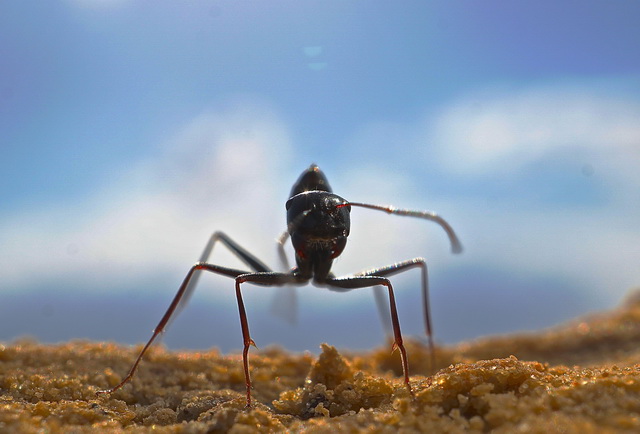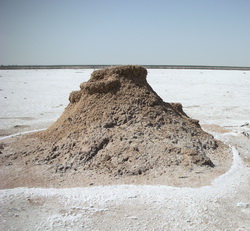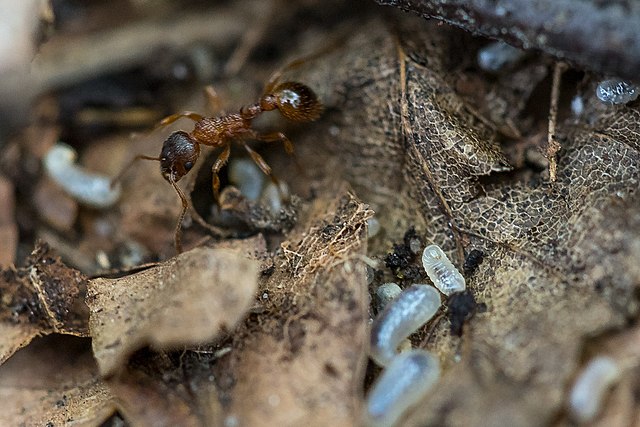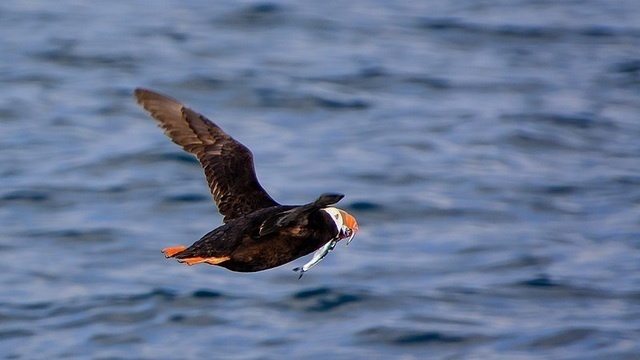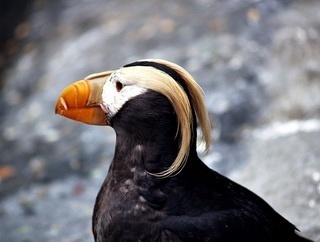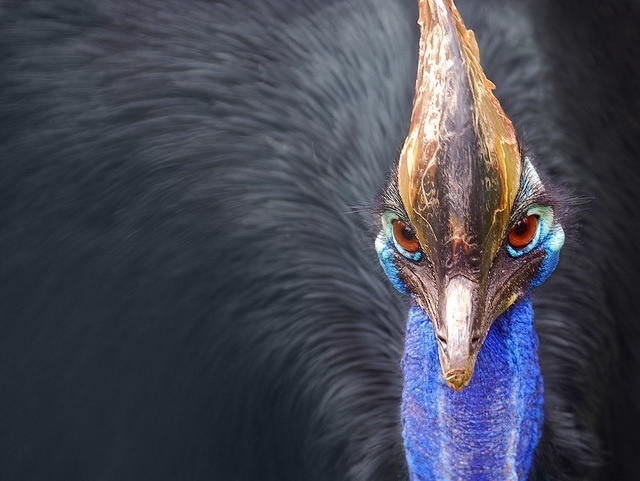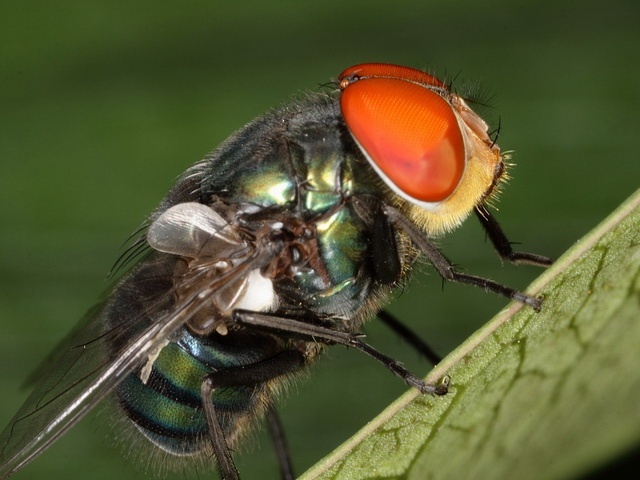Namib Desert beetle cools down by running fast
The Namib Desert beetle withstands the heat of the sun-drenched desert by running. Carole Roberts and colleagues explain this unexpected fact.
The Namib Desert beetle, Onymacris plana, regularly sprints across the scorching sand of the Namibian desert dunes when the sun is shining and there’s no wind. You might think this wouldn’t turn out well: the creature would overheat. But Carole Roberts and her colleagues show that the beetle actually loses heat by running. How strange!
The beetle is about 2 centimeters long and black, has a horizontally flattened body, long legs, and fused elytra, so it cannot fly. These animals forage during the day for food, blown-in organic matter, and males also search for females. The dunes in the Namib Desert are sparsely covered with grasses and shrubs. Therefore, the beetles cannot remain in the shade all the time but must venture out onto the open sand.
Fatal temperature
That sand is often very hot. The surface temperature can reach as high as 70°C. Namib Desert beetles must be able to withstand this.
It helps that the animals stand high on their legs, with their bodies a centimeter and a half above the surface. It’s 10 to 15 degrees cooler there. But they would still quickly overheat in the sun, Roberts calculates. Male beetles heat up 6 degrees Celsius per minute from the sun’s radiation, females 4 degrees. When they walk or run, the exertion adds another degree. An animal that starts with a comfortable body temperature would reach 50°C within minutes and succumb, because that temperature is fatal.
But this doesn’t happen. That is: as long as the animal keeps running.
High speed
The researchers managed to measure the beetles’ body temperature using a tiny thermometer attached to a long wire. A beetle standing still in the sun – they tested this on dead animals – does indeed warm up quickly. But a running beetle cools down, as it turned out.
A Namib Desert beetle runs at a speed of almost 1 meter per second. That is fast for its size. It maintains this speed for 50 seconds on average, covering over 40 meters.
The researchers theorized that the air passing over its body during such a sprint takes heat away. The flattened body dissipates heat easily. Air flowing past removes more heat than solar radiation and exertion add, resulting in the beetle cooling down. Lab tests confirmed this idea.
The Namib Desert beetle is, as far as we know, the only animal that loses heat by running as fast as it can in the sun when there is no wind. A few insects are known to cool down by flying, the authors write, following the same principle.
Willy van Strien
Photo: Namib Desert beetle Onymacris plana. Lidine Mia (Wikimedia Commons, Creative Commons CC BY-SA 4.0)
Source:
Roberts, C.S., E.L. McClain, M.K. Seely, D. Mitchel, V.L. Goodall & J.R. Henschel, 2025. Beetling the heat – the diurnal Namib Desert beetle Onymacris plana cools by running. Journal of Experimental Biology 228: jeb250379. Doi:10.1242/jeb.250379
